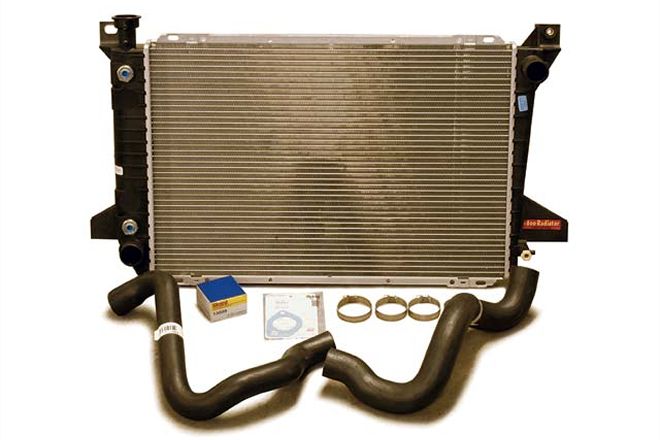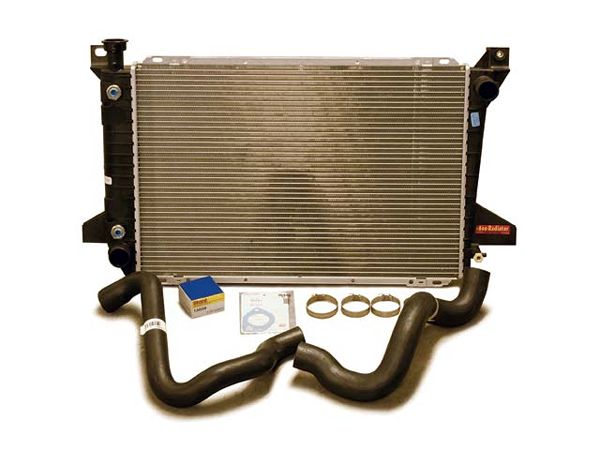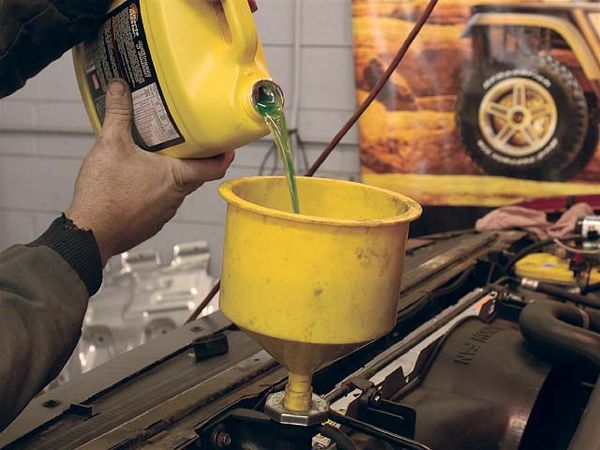
 Ken Brubaker
Senior Editor, Four Wheeler
Ken Brubaker
Senior Editor, Four Wheeler

When the pretty green fluid that resides in your rig's cooling system begins to seep out of the radiator, or if your rig begins to exhibit a tendency to run hot, it's time to break out the tools and swap in a new radiator. For most vehicles, this simple procedure simply requires disconnecting a few hoses and fasteners. No high-tech knowledge is required, and in most cases just basic handtools are needed to complete the swap.
If your rig has a few miles on it, a good rule of thumb is to replace the upper and lower radiator hoses and the thermostat at the same time you swap in a new radiator. After all, the cooling system will be drained of coolant and you'll have the hoses partially removed from the vehicle anyway.
Since ethylene glycol (antifreeze) and cameras don't mix well (and please remember, antifreeze also doesn't mix well with your pets, to whom it is incredibly poisonous, so do not allow it to leak onto the ground where they can get into it), we asked the guys at Attitude Performance to swap out the leaky radiator, worn-out hoses and thermostat in our rig while we shot photos. The total install took less than an hour and a half. Follow along and see how easy it is. This install took place on a 5.0L-powered '92 F-150, but the swap should be similar in most vehicles.

7. After installing the new upper and lower hoses, fill the radiator with coolant. Do this with the engine running so the thermostat will open and distribute the coolant throughout the engine. This will ensure that it's filled to the proper level. It's also a good idea to install a new radiator cap to ensure proper pressurization of the cooling system. And if your truck's radiator also contains a transmission cooler, be sure to check the transmission fluid level after you've reattached the lines from the transmission to its cooler.
* The engine in your rig runs best at a fairly high operating temperature. Cold engine components wear out faster, and, more importantly, the engine is less efficient. Not only that, failure to reach operating temperature can cause the engine to emit more pollutants.
* Coolant (ethylene glycol) is added to water to improve its boiling and freezing points. Even with ethylene glycol added, high engine temperatures can boil coolant, so the cooling system uses pressure to further raise the boiling point. This is why a good radiator cap is important. It can raise the boiling point by as much as 45 degrees F.
* Temperatures in the combustion chamber can reach 4,500 degrees F., so cooling is critical. If the cooling system fails, the engine can literally seize when the piston welds itself to the cylinder.
* Most modern vehicles use lightweight aluminum radiators. Most radiators for vehicles with automatic transmissions contain a tank that houses a transmission-fluid cooler. In this system, the oil exchanges heat with the coolant in the radiator, and with the air that flows through the radiator. Not only does this system help keep the fluid cool, it also helps it warm to operating temperature in cold climates.
* Fans come in both electric and engine-driven varieties. Both must be controlled so that they allow the engine to maintain a constant temperature. Electric fans are controlled by either a thermostat or an engine computer, while many engine-driven fans are controlled by a thermostatically controlled viscous clutch.





